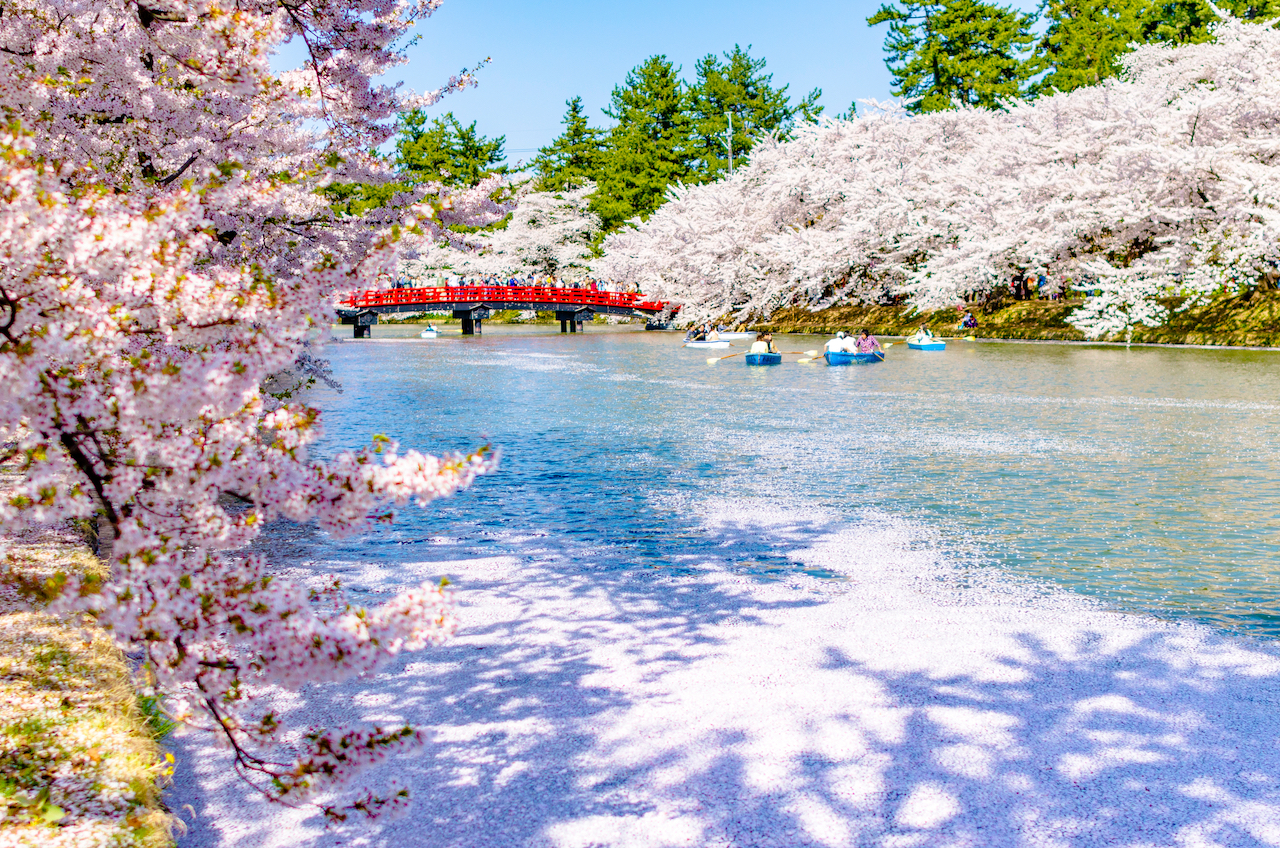Located in the northernmost part of Japan’s main island of Honshu, Aomori Prefecture has a longer winter than other parts of Japan, followed by a late spring. So if you can’t make it to Japan during the winter ski season – then spring skiing in Aomori is for you.
You can not only enjoy the snow-covered mountains, but also enjoy a variety of activities off the mountain.
Aomori is only three hours from Tokyo by Shinkansen (bullet train) or one hour and 25 minutes by plane, with an abundance of nature, local culture and cuisine making for a unique adventure.
Cherry blossoms, festivals, culture, food… the list is endless.
Here are some of the best things to do in Aomori Prefecture between March and May.
Enjoy spring skiing (March to early May)
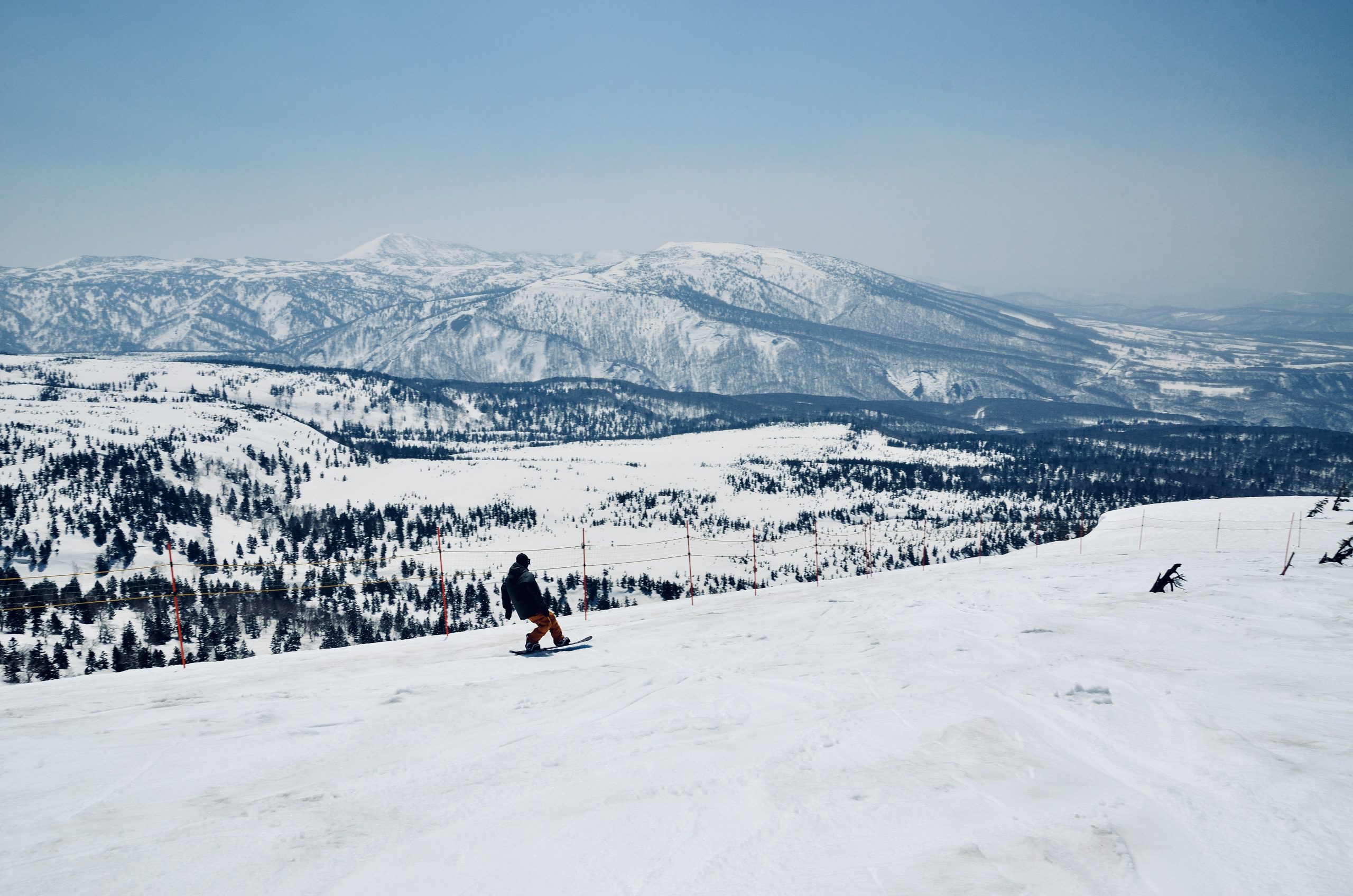
The Hakkoda Mountains’ ski season runs from December to early May (or mid-May, depending on the amount of snow), and they are famous for their powder snow.
Unlike most Japanese ski resorts, Hakkoda is a mountain resort where backcountry skiing and snowboarding is its main drawcard. The ungroomed terrain accounts for 70% of the area, so even in spring, you can enjoy powder skiing to the fullest, and the tree runs traverse through forests of beech trees – one of the area’s most loved attractions.
We recommend taking a guide and there are many guided tours available. Whether you’re a backcountry beginner or a more experienced skier who wants some great local knowledge, this is a great way to enjoy the resort with confidence.
Spring skiing at Aomori Spring Ski Resort in Ajigasawa Town is also a good spring option, with the season lasting until early April. Located on the northern slope of the magnificent Mt Iwaki, the resort is known for its stable snowfall and good quality powder snow. From the slopes, you can enjoy a panoramic view of the Sea of Japan and the Tsugaru Plain.
A walk to feel the breath of spring (from end of April)

About 60 minutes’ drive south of Hakkoda is Lake Towada. It’s the largest caldera lake in Honshu and is part of the Towada-Hachimantai National Park, where the Hakkoda Mountains are located.
The best place to start your sightseeing of Lake Towada is Yasumiya, located to the south of the lake. In just one hour, you can easily enjoy the quiet view of the lake, the beautiful sandy beach, the natural forest by the lake, Towada Shrine and other features of Lake Towada. Here, the Towada Shrine has been revered and respected since the year 807 when it was founded. Now, a type of fortune-telling called Oyori-Gami is popular. Made of washi or Japanese paper, you twist it and drop it into the water. The way it sinks predicts your fortune.
On the lake, sightseeing boats and canoe tours start operating in late April. From mid-May onwards, the area starts to feel more like spring as flowers and grass begin to bud and birdsong can be heard.
See the country’s best cherry blossoms (late April to early May)
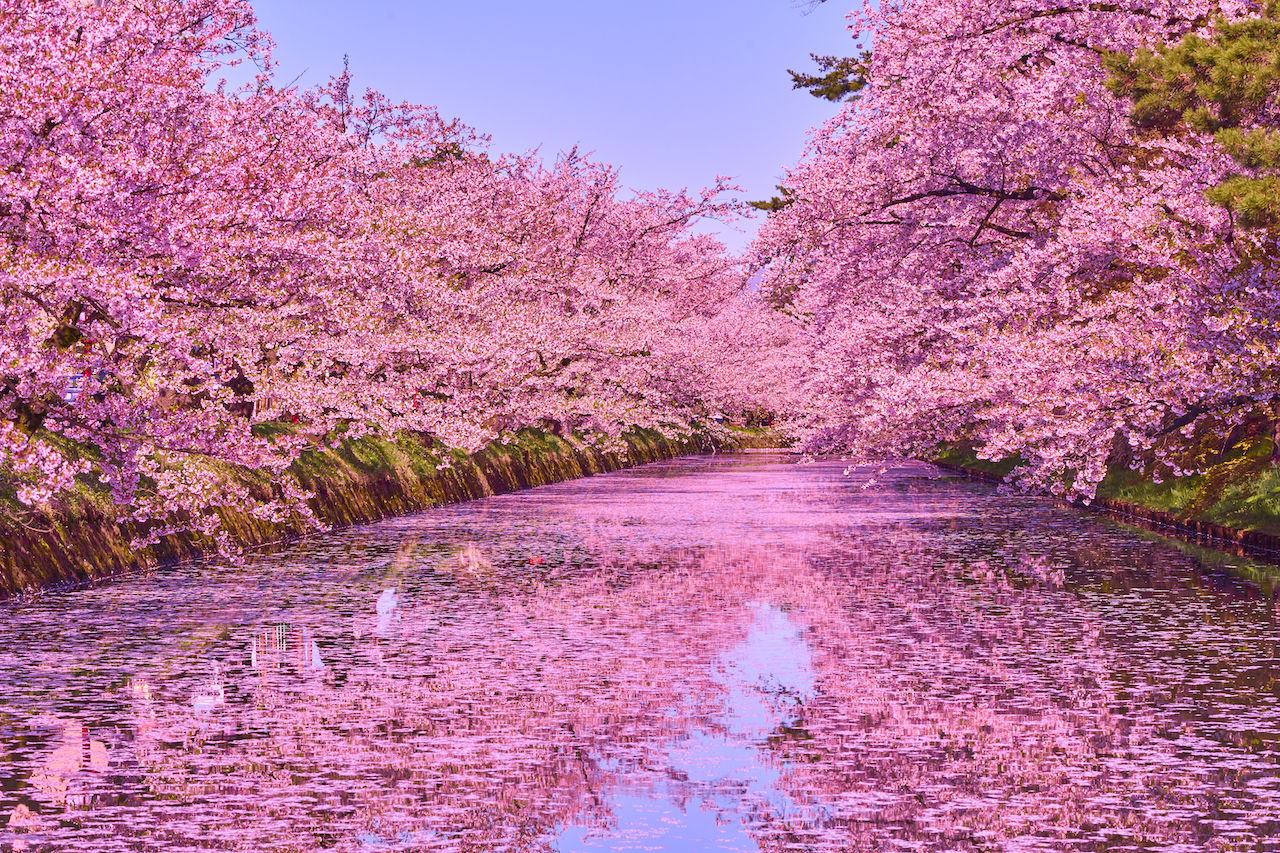
Spring in Japan is characterised by the blooming of the country’s famous cherry trees. The cherry blossom season in Aomori Prefecture is usually from late April to early May.
We’ve found three of the most popular places to experience the cherry blossom season in Aomori.
The cherry blossoms in Hirosaki Park are said to be “the best in Japan”. The park is home to 2,600 cherry trees of around 50 varieties, including common Somei-Yoshino, shidarezakura (weeping sakura) and yaezakura (double-layer sakura).
The petals that fall from the blossoms fill the moat and create a beautiful pink carpet, known as a flower raft. The Hirosaki Cherry Blossom Festival is held in the park every year and attracts around two million visitors, including domestic and overseas travellers.
About 6,500 Oyama cherry trees are planted along the so-called “Necklace Road”, a 20-minute drive west of Hirosaki Park which runs around the foot of Mount Iwaki. The trees are usually at their best in early May. It’s a great driving spot to enjoy the contrast between the lingering snow on Mount Iwaki and the blooming of the area’s deep pink flowers.
Also consider Towada City where from late April to early May the cherry blossoms are in bloom and the city comes alive with the Towada Spring Festival. One of the best spots, Towada Kanchogaidori (Koma-kaido Street), is 1.1 km long and 36 m wide, and lined with 165 pine trees and 156 cherry trees.
The street is also dotted with artworks, mainly from the Towada Art Center, and visitors can enjoy the contrast of cherry blossoms and art, as well as the seasonal beauty of the cherry trees, lit up at night.
Walk the snow corridor, or drive (end of March or April)
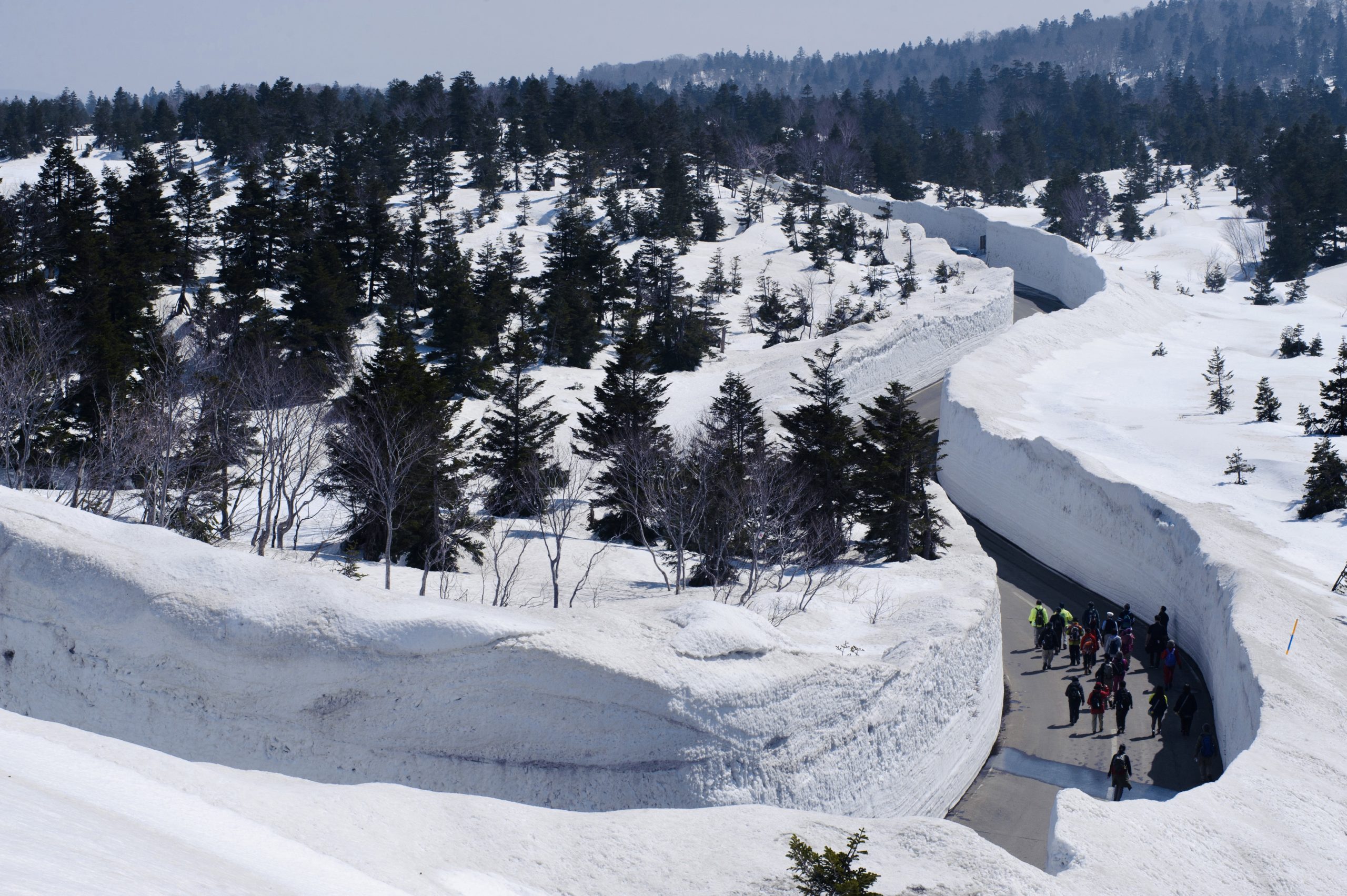
For those who still want to taste more snow, explore the famous Snow Corridor once it opens. National Route 103 (lovingly referred as Hakkoda-Towada Gold Line) is closed in winter due to excessive snowfall.
This road opens on April 1 and the snow corridor, which is almost 10 metres high in places, remains open throughout the month of April. It’s an incredible privilege for spring skiing visitors to be able to drive here – something other skiers will miss out on in winter.
The road opens to pedestrians for two days before it opens to motorists. Known as The Hakkoda Walk, visitors can walk the 8.1 km corridor between Sukayu and Yachi – so if you are going at the end of March, you might like to plan accordingly.
The Hakkoda Walk requires advance registration. Sukayu Onsen and Hotel Jogakura have plans that include accommodation and participation in the walk, so please check the websites of these facilities.
Seasonal food in Aomori
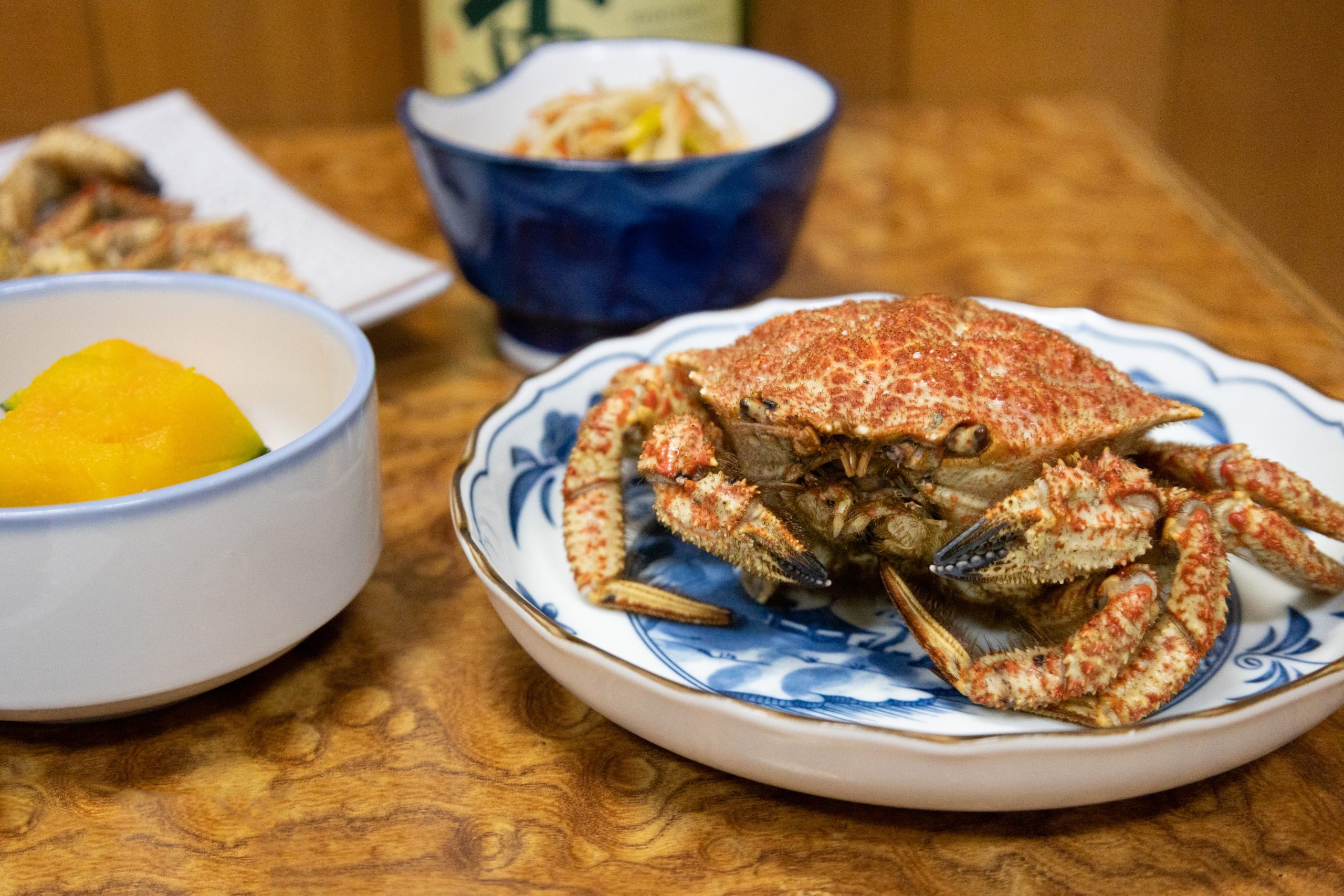
Each region of Japan has its own local specialties – in Aomori Prefecture, the apples, tuna and scallops are famous. And while these are the icons of the area, there are some extra-special delicacies in season through the spring which are also a must-try.
In the Tsugaru region, a staple food eaten at hanami (the flower viewing) is crab, especially helmet crab, and mantis shrimp, known in Tsugaru as ‘gasaebi’. It is common to eat them simply boiled, and they both pair well with Japanese sake.
Both the helmet crab and mantis shrimp are caught in Mutsu Bay, with the cherry blossom period the best time for harvesting as it is their spawning period, meaning they are at the most delicious. They are also considered a symbol of the arrival of spring after the long winter periods. You can purchase them at a local supermarket or order them at an izakaya restaurant.
Are you ready to travel around Aomori Prefecture and discover Hakkoda and its surroundings for yourself? To find out more about Aomori Prefecture, please click here.
